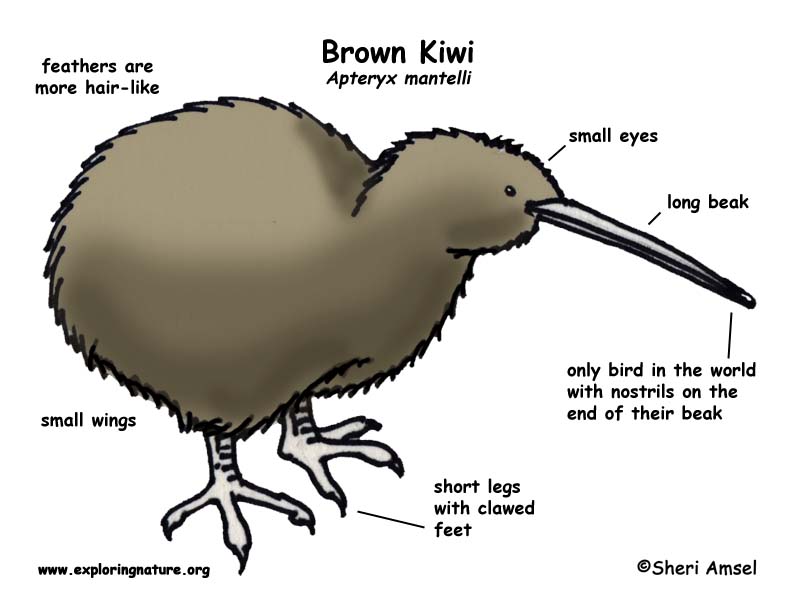

They are found only in New Zealand.
They are found in thick forests.
Their feathers are more hair-like in shape. They have nostrils on the tip of their beak for smelling food. They are the only bird in the world with nostrils on the end of their beak. They are about 14 inches tall.
They are active at night (nocturnal). They live in burrows in the ground and cannot fly. Their predators are all introduced species like dogs, ferrets, cats and weasels (stoats).
They eat insects, earthworm, fruit and seeds.
Pairs mate for life. The female lays a giant egg. The biggest egg compared to body size of any bird on earth. The males keeps it warm (incubates).
Kingdom: Animalia
Phylum: Chordata
Subphylum: Vetebrata
Class: Aves
Order: Apterygiformes
Family: Apterygidae
Genus: Apteryx
Species: A. mantelli
When you research information you must cite the reference. Citing for websites is different from citing from books, magazines and periodicals. The style of citing shown here is from the MLA Style Citations (Modern Language Association).
When citing a WEBSITE the general format is as follows.
Author Last Name, First Name(s). "Title: Subtitle of Part of Web Page, if appropriate." Title: Subtitle: Section of Page if appropriate. Sponsoring/Publishing Agency, If Given. Additional significant descriptive information. Date of Electronic Publication or other Date, such as Last Updated. Day Month Year of access < URL >.
Amsel, Sheri. "Kiwi (Brown)" Exploring Nature Educational Resource ©2005-2024. December 14, 2024
< http://www.exploringnature.org/db/view/Kiwi-Brown >

